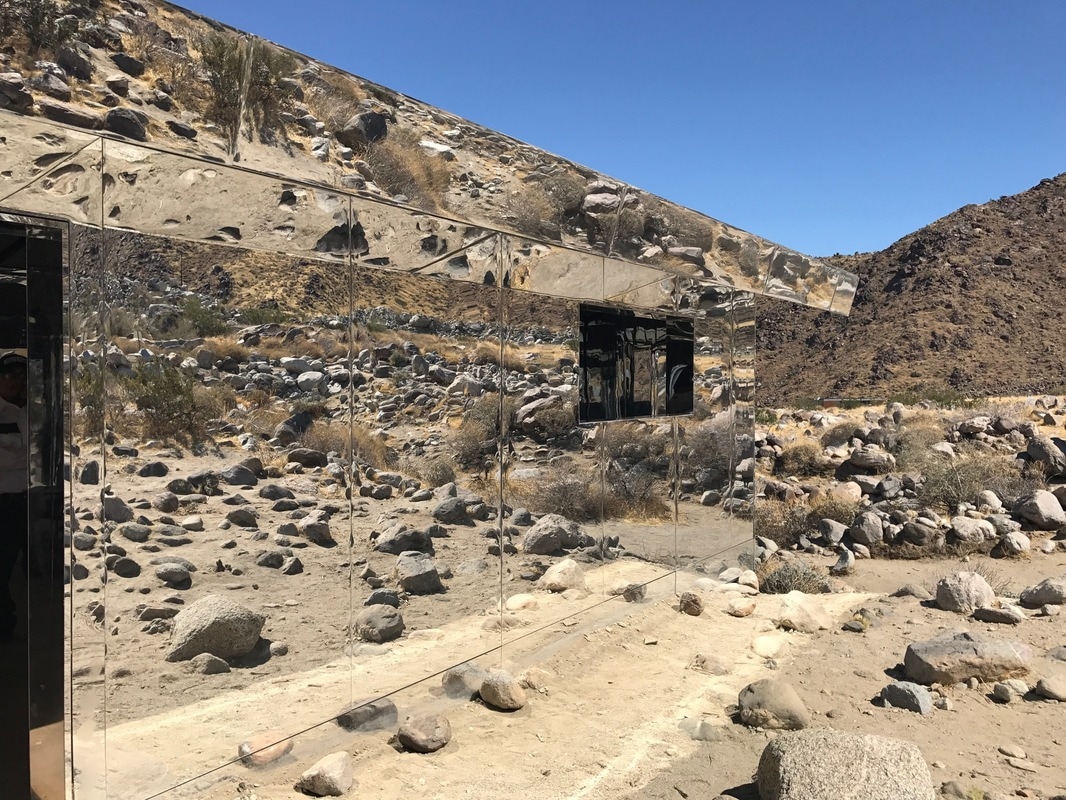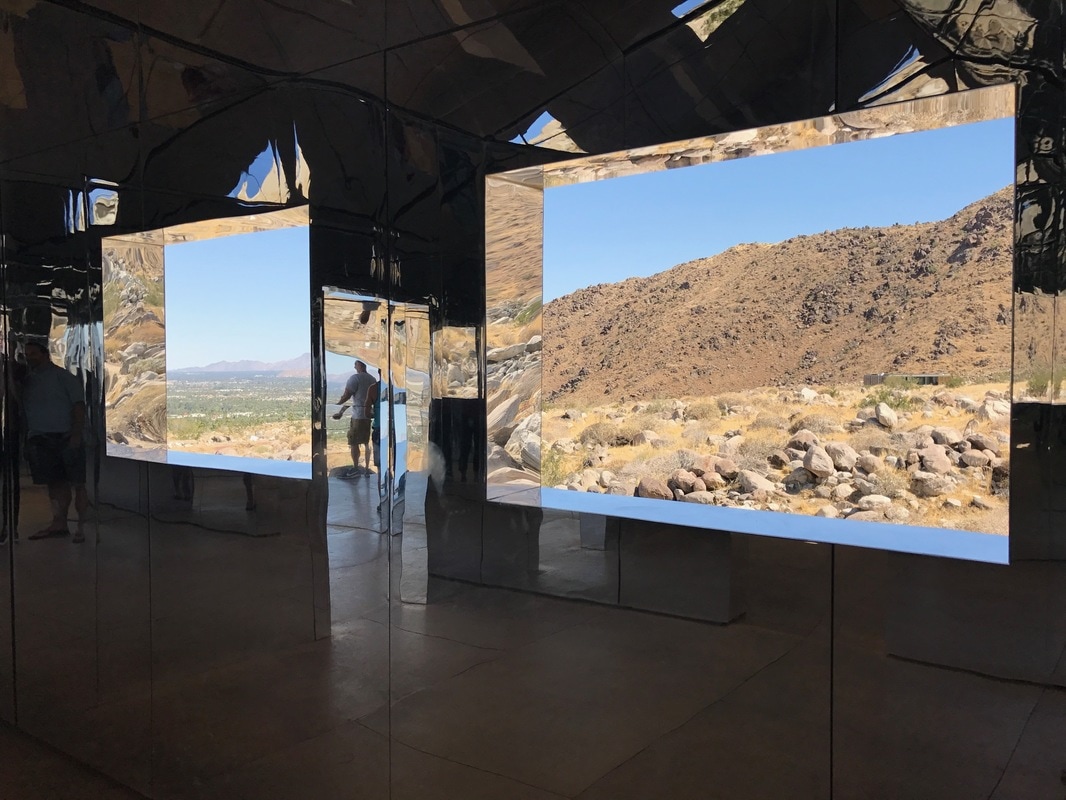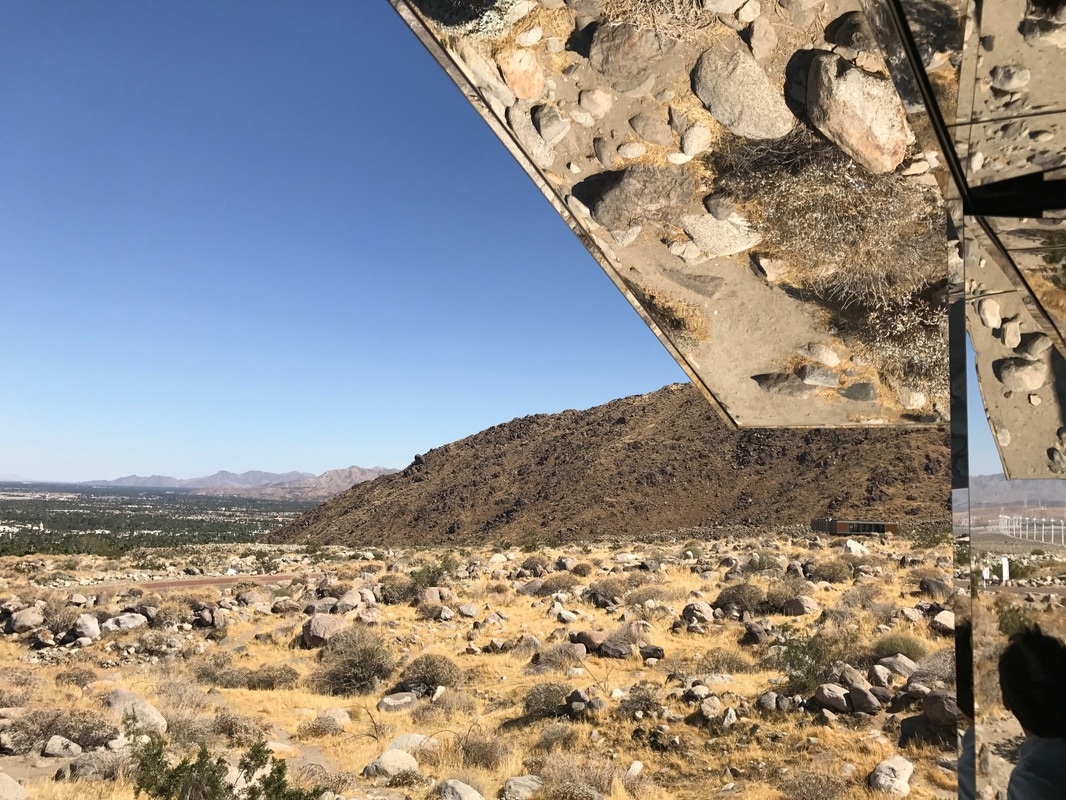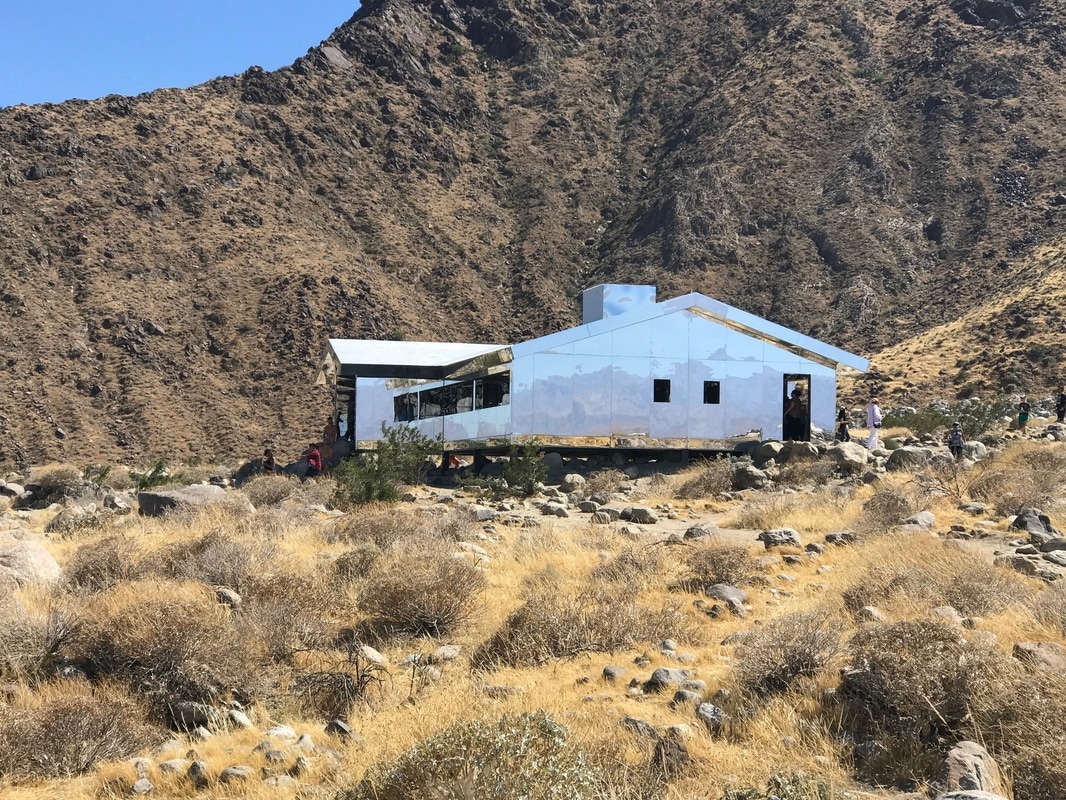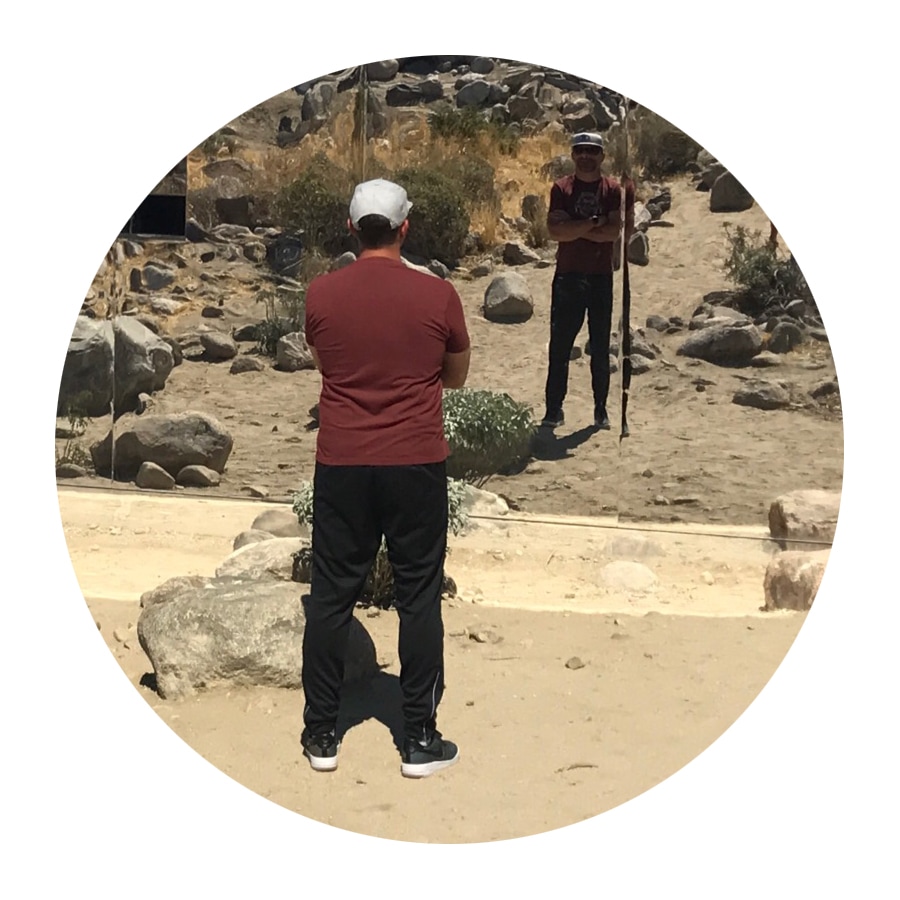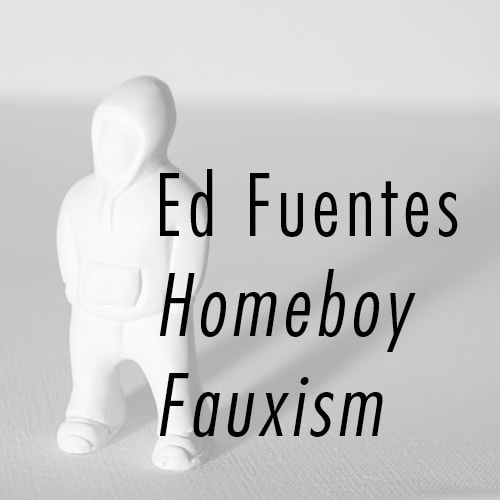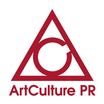|
Doug Aitken "Mirage" (2017). Photos by G. James Daichendt By G. James Daichendt "Mirage" is a site-specific installation by artist Doug Aitken temporally located in the hills overlooking the city of Palm Springs. The mirror-clad house, sits high on an undeveloped residential property where it’s situated in and surrounded by the rocks and dirt with a view of the city grid far below. Part of a series of works associated with the Desert Exhibition of Art (or Desert X), a survey exhibit that aims to bring art to the Coachella Valley and the desert landscape, Aitken’s house is an encouraging project that surpasses the shallow installations and relational aesthetics that complement music festivals nowadays. Since Desert X closed on April 30, 2017, there are only a few projects still available to visit, fortunately Aitken’s "Mirage" is one of them and it’s worth the trip. The history of modern architecture is related to the development of innovations in technology, materials, and the desire to create something that broke from the decadence, detail, and opulence that was represented in the Classical, Renaissance, Baroque, and Beaux-Arts styles that dominated much of architectural history. Architects that practiced modernism in the American west designed structures that were geometric with minimal detail that mimicked this backdrop. While modern architecture thrived in cities around the United States during the 20th century, typical suburban houses still held onto decorative motifs and embellishments that embraced the familiar designs of the past. Aitken’s installation acknowledges this history through a ranch style house, a very popular design typically associated with planned communities and tract housing during the mid-century era. This was a more conservative design compared to the cutting-edge design practiced by architects like Frank Lloyd Wright (see Fallingwater) and Philip Johnson (see The Glass House). Yet this tradition is juxtaposed with modern notions of bringing the outside in, as there are not only large windows and doorways without obstructions in "Mirage" – there is also a constant stream of light and imagery via the mirrors which attached to the walls and ceiling as they are reflected upon each other. In these instances, it becomes difficult to surmise at moments where the actual landscape begins and ends. The romantic notions of the American west are present in Aitken’s "Mirage" and the shifting landscape continues to move as one walks through the installation, making it appear alive and exciting. While the plywood floors leave something to be desired, the practicality of the decision is understood for the life of the piece and heavy traffic it has experienced. In the end, it’s perfect opportunity and experience for the selfie conscious visitor, an appropriate action in this instance as Mirage acts as a large frame to view oneself, the familiar, and the larger landscape of the American West.
0 Comments
Limited-edition serigraph prints of #jimlookingatart, an image from my midway exhibition, made its debut in April (Many have been sold before I could post about it here). To purchase a signed edition click to Fluer De Boom Editions. Proceeds will fund my thesis exhibition, which is already scheduled for May, 2018.
|
An Online Arts Journal
Exhibition:
February 2 – March 31, 2019 Artist Reception and Gallery Talk: Sunday, February 10, 2019, 4 p.m.–7 p.m. S P O N S O R
ARCHIVES
January 2019
TAGS
All
|

